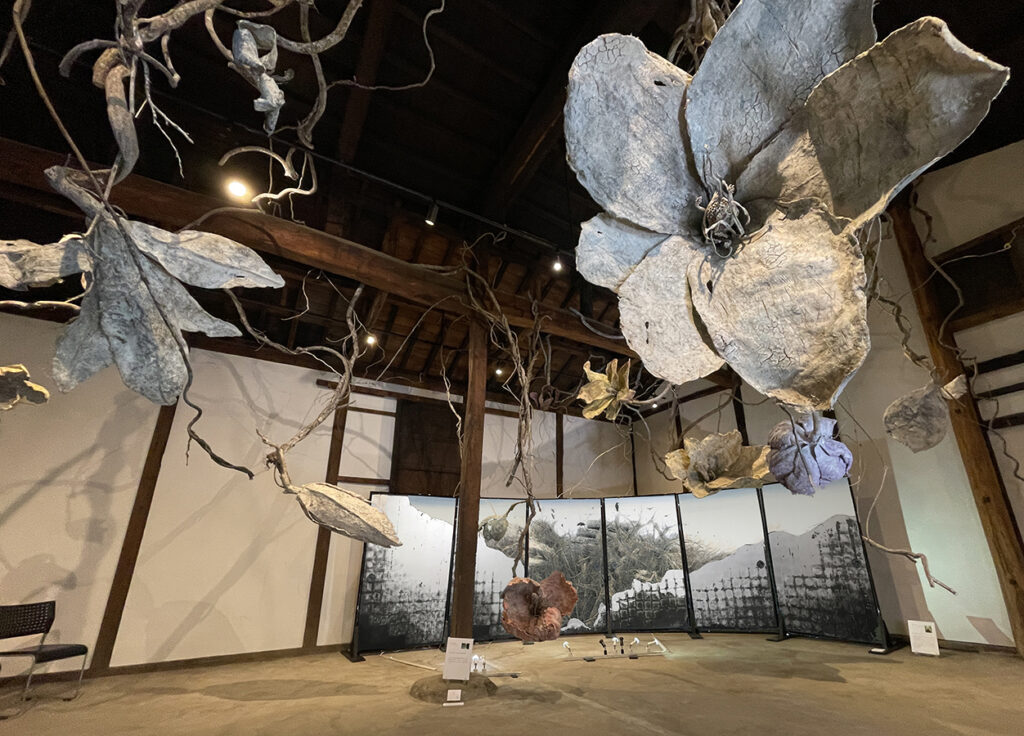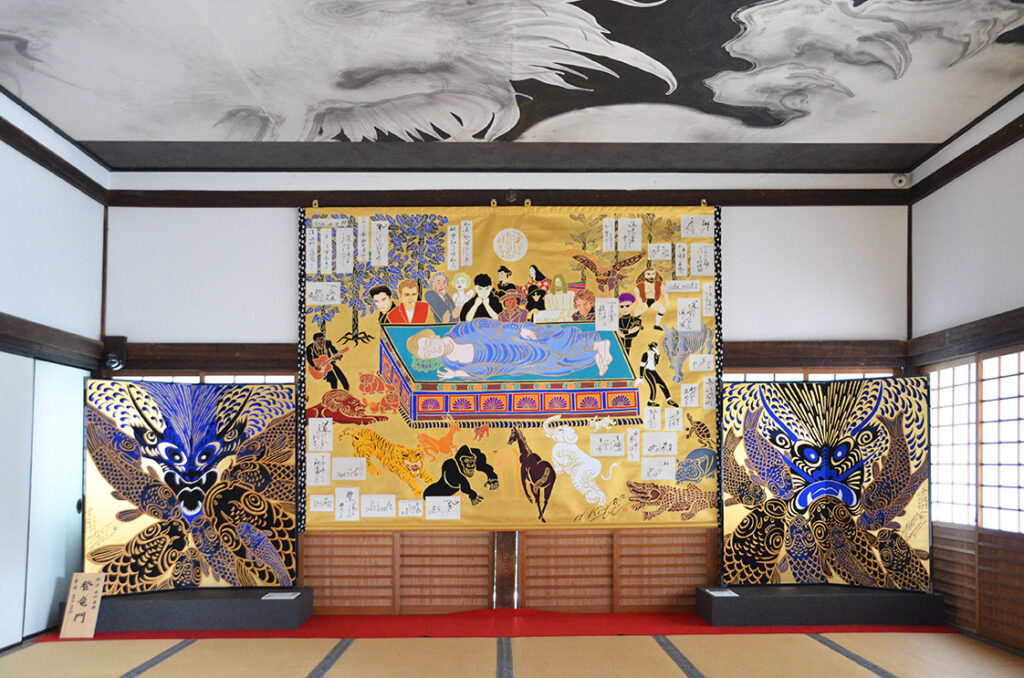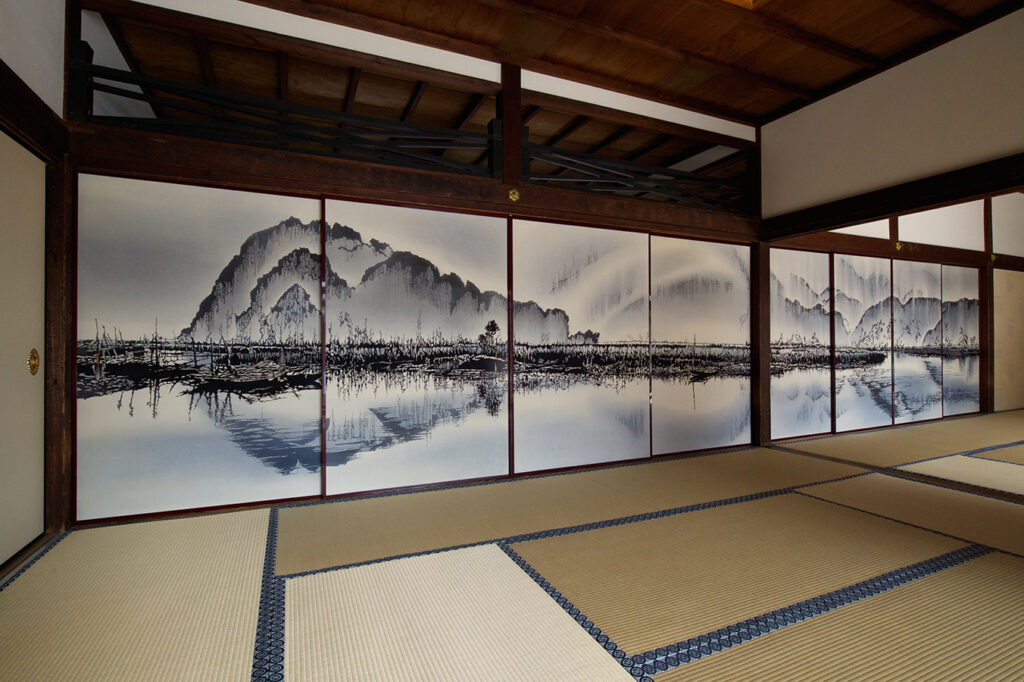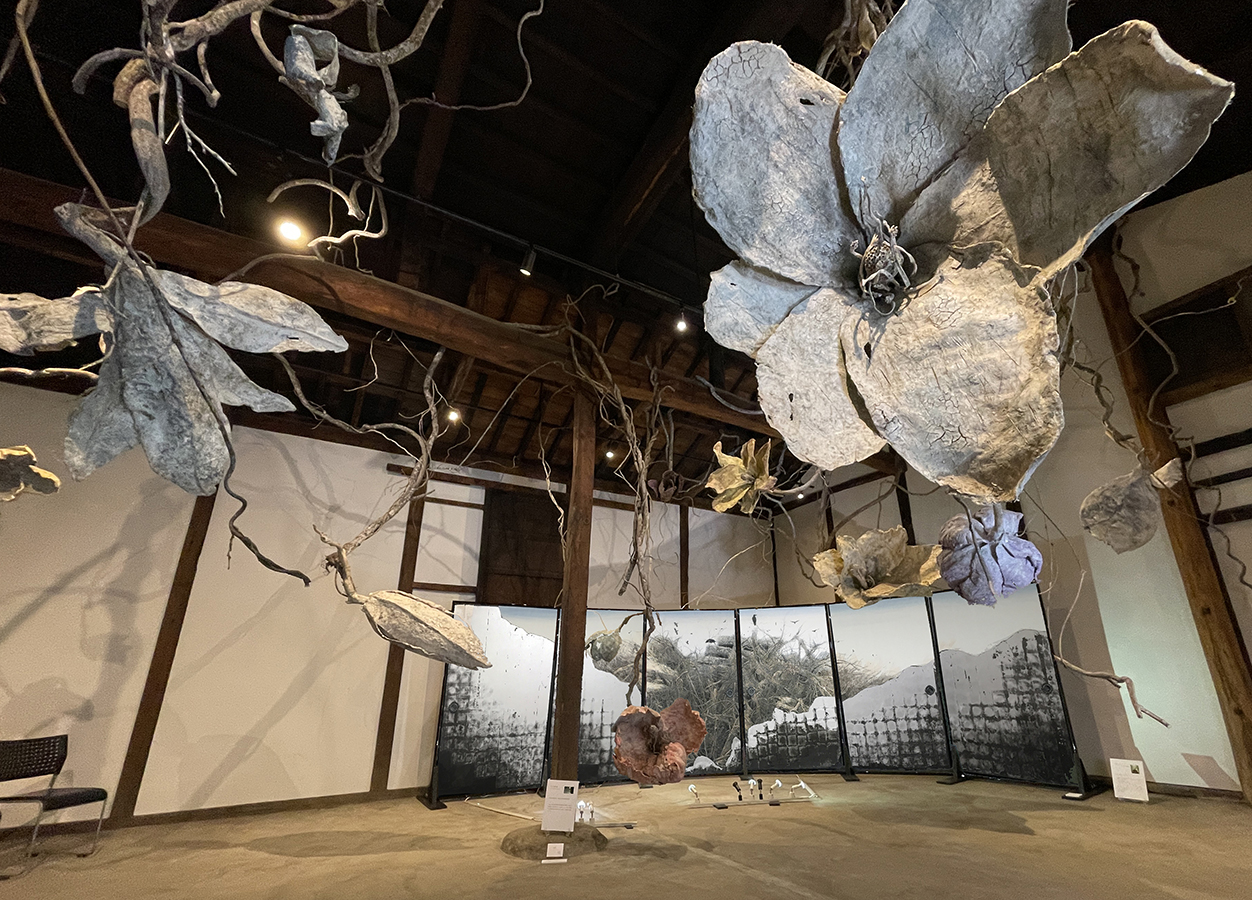
Among Japanese art forms, fusuma-e (sliding door paintings) and byobu-e (folding screen paintings) are unique art forms that create beauty in harmony with their surroundings. Their expressions shift with the changing light and the passage of time, drawing viewers into a profound world. This project focuses on three contemporary painters, exploring the worldviews they express through their brushes and their approach to carrying on tradition into the modern age.
Beyond tradition. New horizons illuminated by contemporary ‘painters’
In tranquil spaces, the world of painting unfolds quietly yet powerfully. Japanese-unique art forms like fusuma-e (sliding door paintings) and byōbu-e (folding screen paintings) are not mere pictures, but spatial arts that resonate with their surroundings. The act of opening and closing fusuma, shifting light, the angle from which one sits—all interact with the paintings, altering their expression with the passage of time. Nurtured within traditional Japanese architecture, this form of expression has altered its presence with the passage of time. Yet, through the hands of contemporary painters, it is now being infused with fresh vitality.
Interviews with three painters – Masatsugu Ito, Hideki Kimura, and Mika Toba – reveal an attitude that respects tradition while pursuing expressions that could only emerge here and now. Each, in their own distinct approach, creates a unified world that resonates with the space, the light, and the presence of those gathered there. This process bears a certain resemblance to how fashion is completed by adapting to the wearer’s body and lifestyle.

The fusuma paintings of Japanese painter Masatsugu Ito carry a taut atmosphere alongside a subtle warmth. He depicts ancient maple trees said to be 400 years old, Mount Fuji bathed in moonlight, or the fleeting moment of blossoms scattering. In a collaboration with contemporary artist Yasumichi Ishida, they created Memorial for the Departed, inspired by the Great East Japan Earthquake. Resonating with Ishida’s object Flower Forest, they crafted a space that gently poses questions about ‘living and dying’. ‘Art does not reside solely within museums.’ Driven by this conviction, he actively pursues creative endeavours that engage with society: collaborations with Noh theatre, reinterpretations of regional heritage, and works using recycled materials. Resonating with the “culture of lines” found in anime and manga – familiar to younger generations – he seeks ways for art to gently accompany people’s daily lives and hearts.
Stepping into the world of artist Hideki Kimura, one’s body reacts involuntarily. His paintings “move”. Having made his name as a music producer in his youth, Kimura transitioned to becoming an artist upon reaching his 60th year. Since then, he has continued to depict plants and animals in dynamic compositions and vivid colors, centred on the theme of “life”. His stages extend beyond temples, shrines, and traditional restaurants to cafés, live music venues, hotels, and even the walls of buildings throughout the city. Kimura’s works, created wherever there is a wall to paint upon, seem to breathe life into the space itself. His stance, respecting traditional techniques while steadfastly pursuing his own expression, is nothing short of exhilarating. His paintings embody a freedom that transcends both age and convention.

In contrast, dyeing artist Mika Toba’s approach is delicate and introspective. She carves stencils, applies paste, and layers dyes repeatedly. Within the 18-step process of hand-dyed stencil work, Toba carves in “time”. Her aesthetic, nurtured in Kyoto, and the fervour and chaos she felt in Vietnam. Her work, encompassing these two extremes, possesses a grand scale yet carries a prayer-like stillness. Particularly noteworthy is her dedication to fabric as a “living material” and the “colors that seem to glow from within” achieved through dye. Rather than merely preserving tradition, she renews it through her own sensibility. Here lies the very embodiment of a mediator connecting past and future.Common to all three artists is their perception of “tradition” not as something fixed, but as a living expression in constant renewal. However much technique evolves, the “warmth” and “prayer” inherent in a single hand-painted picture continue to resonate deep within our hearts. Rather than merely guarding the past, they breathe new life into tradition, transforming it into fresh forms. Encountering their words—why they paint, what they cherish—will surely reveal the relationship between painting and space, and the profound depth of expressive forms like fusuma paintings and folding screens, in a light never seen before.

